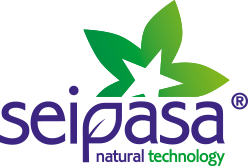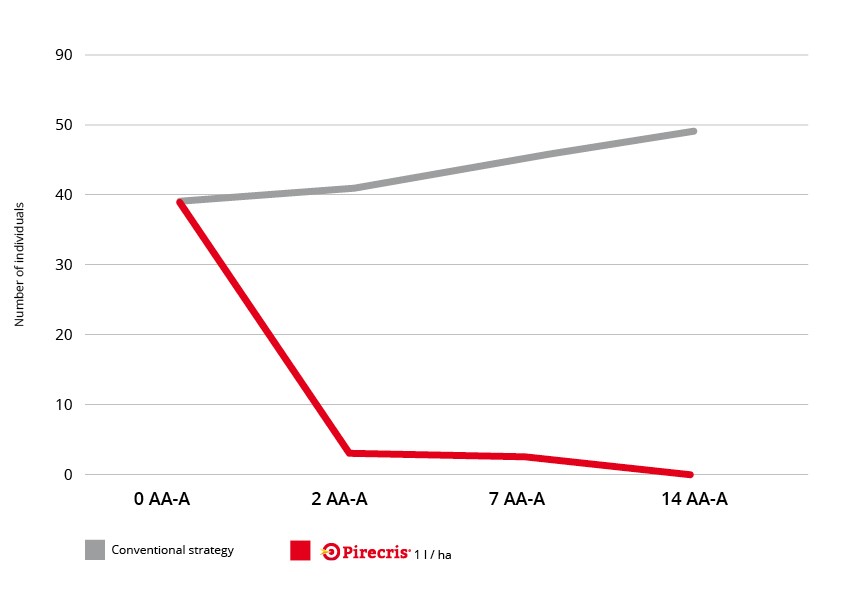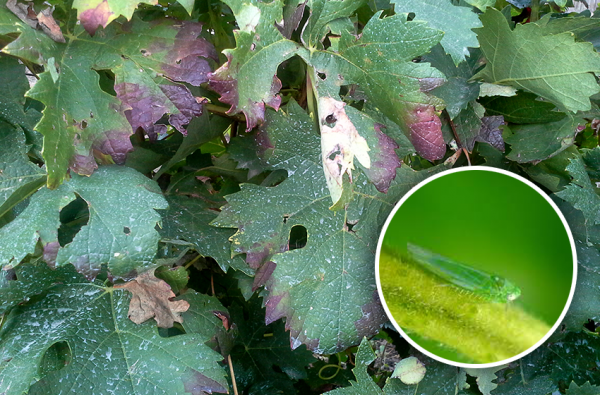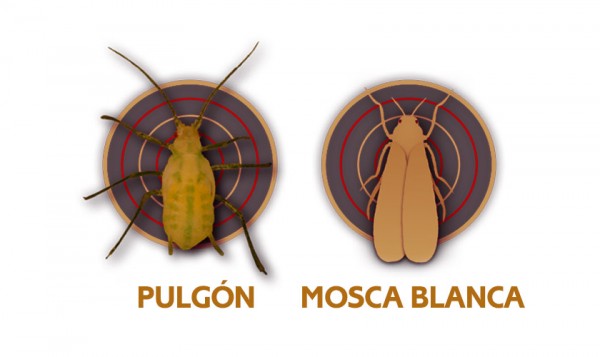Control of Scaphoideus titanus on grapevines: early action is the best strategy
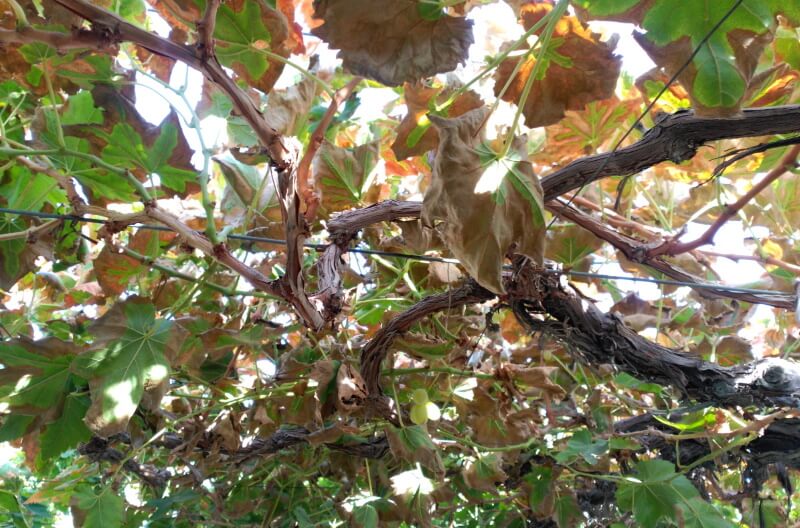
Damage caused by the action of cicadellidae in the vineyard crop.
Scaphoideus titanus is already here. The vector insect of grapevine flavescence dorée stopped over winter but with the high summer temperatures the risk of this disease multiplies once again, especially at present when the grapevine’s phenological development is progressing rapidly.
To combat this disease it is crucial to identify the symptoms early on. Signs of the disease are very obvious and range from delayed sprouting, leaves that roll downwards or a red or yellowish colour to leaves, depending on whether they are red or white grape varieties.
Controlling flavescence dorée involves combating Scaphoideus titanus by means of insecticidal treatments that bring about a rapid decline in populations. Along these lines, it is important to recall that some European countries, such as Italy (Ministerial decree 32442/2000) require vine growers to apply at least one mandatory application to prevent the propagation of the disease.
Seipasa has extended the registration of its Pirecris bioinsecticide as a reference tool for the control of Scaphoideus titanus. The product is the result of an exclusive formulation thanks to the perfect balance between the PI and PII molecules that form its active substance, and which afford Pirecris maximum insecticidal efficacy.
Pirecris has a powerful neurotoxic effect, which is characteristic of its active ingredient, that together with its physical effect allows it to quickly eliminate the pest at any stage in its development, from larva to adult. Graph 1 shows the results of a technical trial carried out in France at a vineyard of Cabernet Franc variety. The powerful shock effect of Pirecris can be observed and its rapid action, after day 2 of application, reducing pest populations.
Graph 1: Scaphoideus titanus larvae count on grapevines
Treatments for the control of Scaphoideus titanus
The life cycle of the Scaphoideus titanus includes one generation per year, and in this cycle the larvae hatch approximately between the months of April and May. Taking this into account, Seipasa's strategy for the use of Pirecris for controlling this vector of flavescence dorée is that the first treatment should be to be applied one month after the first larvae appear given that at the early stages they do not have the capacity to infect until 4 weeks after having been exposed to the phytoplasma of a diseased plant (see figure 1).
Figure 1. The approximate months of the year during which S. titanus develops its life cycle and recommended periods of treatment with Pirecris. Source: adaptation based on the original document published by the INRA.
.jpg)
Following the initial treatment, a second and even a third treatment is recommended depending on the evolution of populations and whether or not there are survivors or larvae from parcels in which control actions have not been applied.
The second treatment should be applied 15 days after the first in order to cover the entire hatching period, and the third one month later. The third application effects the adult insects.
Continual monitoring
In addition to these treatments it is important to highlight other valuable preventive measures such as continual monitoring, checking the backs of vine leaves to detect the insect during its early stages of development. Also the use of chromotropic traps, which allow specimens of Scaphoideus titanus to be captured at more adult stages when they have the full capacity to fly and move from one grapevine to another.
Pirecris is the ideal solution for including in Integrated Pest Management (IPM) strategies. It has a short safety period and allows pest infestations to be controlled at stages very close to harvesting, without affecting the quality of the grapes. In addition, Pirecris is certified for its use in organic agriculture (UNE 315500).
